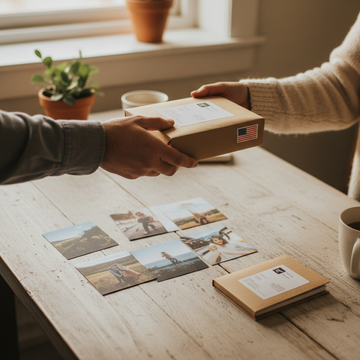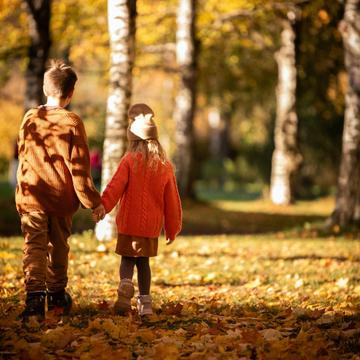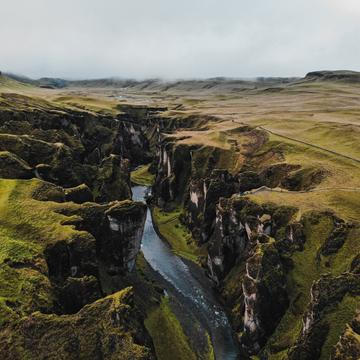- Sale %
- Photo PrintsNew!
- Photo Magnets
- Photo Books
- Wall ArtNew!
- Calendars
- Accessories
- Occasions
- Gift ideasNew!
- Magazine

Wondering why we give each other presents at Christmas and how this holiday is celebrated in different parts of the world and what is served for Christmas dinner in each country? Read on and find out everything you wanted to know!
As you probably know, Christmas is a Christian holiday that we celebrate on December 24th and 25th. In the Christmas Around the World section, you can read about the Christmas curiosities of some countries. But first let's see how Christmas came about and why we give each other presents.
Christmas is a Christian holiday celebrating the day when Mary and St. Joseph's son, Jesus Christ, was born in Bethlehem (in the area of present-day Palestine). He is called a preacher, the most important prophet, the Messiah of the Jews, the Savior of mankind or the Son of God, and was crucified around 30 AD in Jerusalem, where he was also buried.
In Europe, we can find small nativity scenes made of various materials (paper, wood, gingerbread) that depict this mystical birth, when Mary and Joseph could not find a place to sleep along the way so they took refuge in a barn. After the birth, the newborn was placed in a manger with straw, as there was no place for him elsewhere. Pilgrims then came to Mary, Joseph, Jesus Christ and the ubiquitous animals, because the star of Bethlehem shines above them.

The key is probably the continuation of the Bethlehem story, which says that both poor and rich pilgrims came to Bethlehem to give bread, furs, money, etc. to baby Jesus . And there came three kings, the wise men of the east, which brought gold, incense, and myrrh.

Myrrh is a blue-green resin (dried sap of the myrrh tree, which was highly valued in antiquity and its value was often greater than its weight in gold.
Evidence of the fact that people gave each other gifts at Christmas dates back to 16th-century Europe, but until the 19th century only children received gifts. They received clothes, toys and other things. The women received various fabrics, sewing and household items. The men were given pipes, snuffboxes, suspenders and slippers. In the poorest families, children received at least an apple or nuts. Farmers would present the helpers with new clothes, food or money, and small gifts were also given to nomads and beggars.

German immigrants later brought with them the practice of placing evergreen branches and trees in their homes during winter as a reminder of life during hard times .
In the USA Christmas became a national holiday in 1870, and for the first few hundred years after the death of Jesus Christ, his birthday was not celebrated. The most important Christian holiday was the Three Kings' Day / Epiphany. Americans' views on Christmas changed a lot in 19th century because of Washington Irving who wrote the fictitious story "Old Christmas" on how Christmas had been originally celebrated in England before the expansion of Puritans . Catholic immigrants also brought the tradition of keeping small nativity scenes in their homes.
📚 Tip: Cold and long evenings? Buy the book Old Christmas on Amazon
On the 24th of December, family members visit each other and only small gifts are given - the big ones do not come until January 6 with the witch Bafana. The main event here is the annual blessing of Pope, Urbi et orbi, which takes place on December 25th . It is followed by a rich dinner where turkey, lamb or chicken is served, as well as panettone - sweet bread.



Children receive presents from Christmas elves every day from the 12th to 24th of December into shoes placed behind the window. Everyone gets at least one new article of clothing, otherwise they are going to be eaten by the Christmas cat according to the local tradition.
Do you decorate the Christmas tree with your national flags? Norwegians do. In addition, all Christmas brooms are carefully hidden at Christmas eve, because the story goes that witches will come into houses and look for brooms to fly on. Norwegians also have a special strong and very sweet Christmas beer. What will Norwegians have for Christmas Eve dinner? Probably ribbe - pickled bacon with pickled cabbage, potatoes and Christmas sausage, or lamb ribs (pinnekjøtt) stewed on birch twigs.



As an Orthodox country, Russia has the holiday postponed until January 6. Děda Mráz (Grandpa Frost) brings presents on the next day and puts them under the jolka (Christmas tree). Before Christmas, Orthodox Christians fast for forty days, during which they are to pray and meditate. They do not eat meat, milk, eggs, cheese or drink alcohol during that time. Traditionally, fasting ends with a Christmas meal of wheat, honey, dried fruit, poppies and nuts called kutija. Everyone is allowed to eat only in the evening after the service. Today the most often served meals are roast stuffed pork head, roast pork or veal, goose with apples, hare in cream or various game. Specific are vareniks - turnovers of leavened dough filled with potatoes, mushrooms or cabbage.
The symbol of Christmas is a goat, which has a red ribbon wrapped around it. Old guy Jultomen goes from house to house with gifts accompanied by elves and dwarves. Saffron bread and jam Christmas cakes are served, and dinner is in the form of a buffet, from which everyone takes what they like - but potatoes porridge must be there. Nowadays, lutfisk (infused fish of gelatinous consistency) often appear. One plate of porridge is always left outside the house for the Christmas elf. The food is washed down with dark beer or Swedish mulled wine.

If you asked two Spaniards "Who brings presents on Christmas?" each would answer you differently - depending on from which region they come from. The strangest version comes from Catalonia - Tió de Nadal is a log with a Christmas red cap and a painted face . You have to feed it everyday otherwise you wont get Christmas presents.
Christmas Eve (Noche Buena) is celebrated as a family. The houses are decorated with pine twigs, candles and mangers. Traditional three-king cookies (round cakes decorated with fruit and nuts) are baked, in which small surprises are hidden. The festive dinner consists of a turkey or capon with stuffing, which varies by region - in Galicia it is from chestnuts, in Asturias from apples and in Catalonia from prunes. Meals are washed down with sweet red wine. In Spain gifts are given on the Feast of the Three Kings and the holidays last until January 7.



If you are looking for exotic meats for Christmas, then go to Argentina where roast peacocks are served for a Christmas dinner. In addition, dinner often takes place outside, because summer ends there at that time.
Do you think that fake spiders are just for Halloween? Such a mistake ... in Ukraine they consider spiders and cobwebs a sign of Christmas. It is believed that cobwebs bring happiness. The typical food is "lokshe" (potato pancakes). One is usually thrown on the ceiling by the father of the family - the stuck parts of the dough evoke happiness for the family. Borsch, pampushka buns and fish are served for Christmas diner. The traditional dessert is kuta, which is prepared from poppy, wheat, nuts, candied fruit and honey. Moreover Christmas is not celebrated here until January 7.



If the locals want to eat Christmas dinner in a traditional way they do not use a table, they eat on the ground. They lay straw on the ground and then cover it with a festive tablecloth (It is a reminder of Jesus, who was born in the hay).
Do you know the Mr. Bean series? Watch this Christmas video! A favorite English dish is a huge roasted turkey with walnut stuffing. At the end of this filling dinner comes the time for English pudding, which the whole family prepares during Advent and coins are hidden in it (which brings luck). Gifts are brought by Father Christmas at night and will not be unwrapped until the morning of December 25th.
🎬 Tip: Watch this Christmas episode of Mr. Bean on Youtube



The locals go to church every morning from the 16th of December till Christmas Eve on the 24th. But how? On roller skates! The celebrations are accompanied by fireworks, Gaita music is played instead of carols. Nativity scenes and Christmas trees are also popular here. The traditional dish is Halacas - a mixture of beef, chicken and pork, to which capers, raisins and olives are added and everything is cooked over steam in corn leaves. St. Nicholas or Baby Jesus gives presents here.
In the Philippines, the only traditional food is sticky rice, which symbolizes family togetherness. Everyone then adds to it whatever he or she likes. The first Christmas services begin here on December 16 and are accompanied by the glow of candles and lanterns. A typical dish at the present is adobo - pork with potatoes, as well as pansit - noodles with carrots, cabbage and pork. Rice wrapped in banana leaves is served as a dessert.

Do your grandmothers like postcards? Then Christmas in Australia would surely please them. The most interesting custom here is that people send each other Christmas cards which are then used to decorate houses and apartments. People who are competitive hang postcards on the windows to show off the amount they have - offline Australian in an Australian way.
In Hawaii, you should buy an aquarium with a Clown triggerfish for Christmas (but we couldn't find out what they do with the fish after Christmas). Santa Claus comes here with gifts in a water boat. There is no traditional Hawaiian Christmas meal. They like to go for a picnic here, because they can grill Kaluu - a roast pig.
Neither Santa Claus nor Santa, but Père Noël (Father Christmas) brings presents here to the cleaned shoes prepared in front of the fireplace. Children have Advent calendars in which sweets as well as parts of the Gospels are hidden. Oysters, white sausages, snails, fish soup and Christmas turkey with chestnut stuffing or truffle paste appear on the table. A popular dessert is le buche de Noël - a bun in the shape of a log. Christmas Eve ends with midnight mass. December 25th is then a day of good deeds, the French give food to homeless people, orphans and the poor.



Christmas Eve is marked by fasting, then in the evening twelve courses are served (representing the number of months) and one extra plate is set for an unexpected visitor. Borsch, cabbage or fish soup, fish (herring, sturgeon, carp) are cooked; bread and holy wafers are served, as well as turnovers with cabbage and greaves, then poppies (buns with poppy seeds and raisins, which are dipped in sweetened milk), millet porridge and other dishes.
The biggest gifts are given by St. Nicholas on December 6, then only small gifts are given on Christmas Eve. Christmas Day is also a working day here. At God's feast, breakfast is served with cougna - a sweet pastry whose shape is close to the figure of a baby and symbolizes a newborn Jesus. Cougna can be bought with chocolate, raisins, orange peel, or without additives. Dinner begins with an aperitif. As an appetizer, seafood is served. The main course is a turkey and at the end comes a cake with cream or a foam roll resembling a log.



You can try our products and create gifts from your own photos!

Due to new U.S. customs rules, we’ve had to introduce a $100 minimum order for American customers. Small pa...

If you think mini photos are only good for your wallet or small photo album, you are wrong. We're going to ...

Colorful leaves, shiny chestnuts, pumpkins on every corner… Autumn is truly magical. It’s also the perfect ...

Iceland is a country that gets under your skin. A landscape full of contrasts, where glaciers meet fire and...

During the summer, we take a lot of photos and it happens that the best moments remain buried deep in the g...

Love the look of Instax photo prints with their iconic frame but don’t want to invest into an expensive cam...